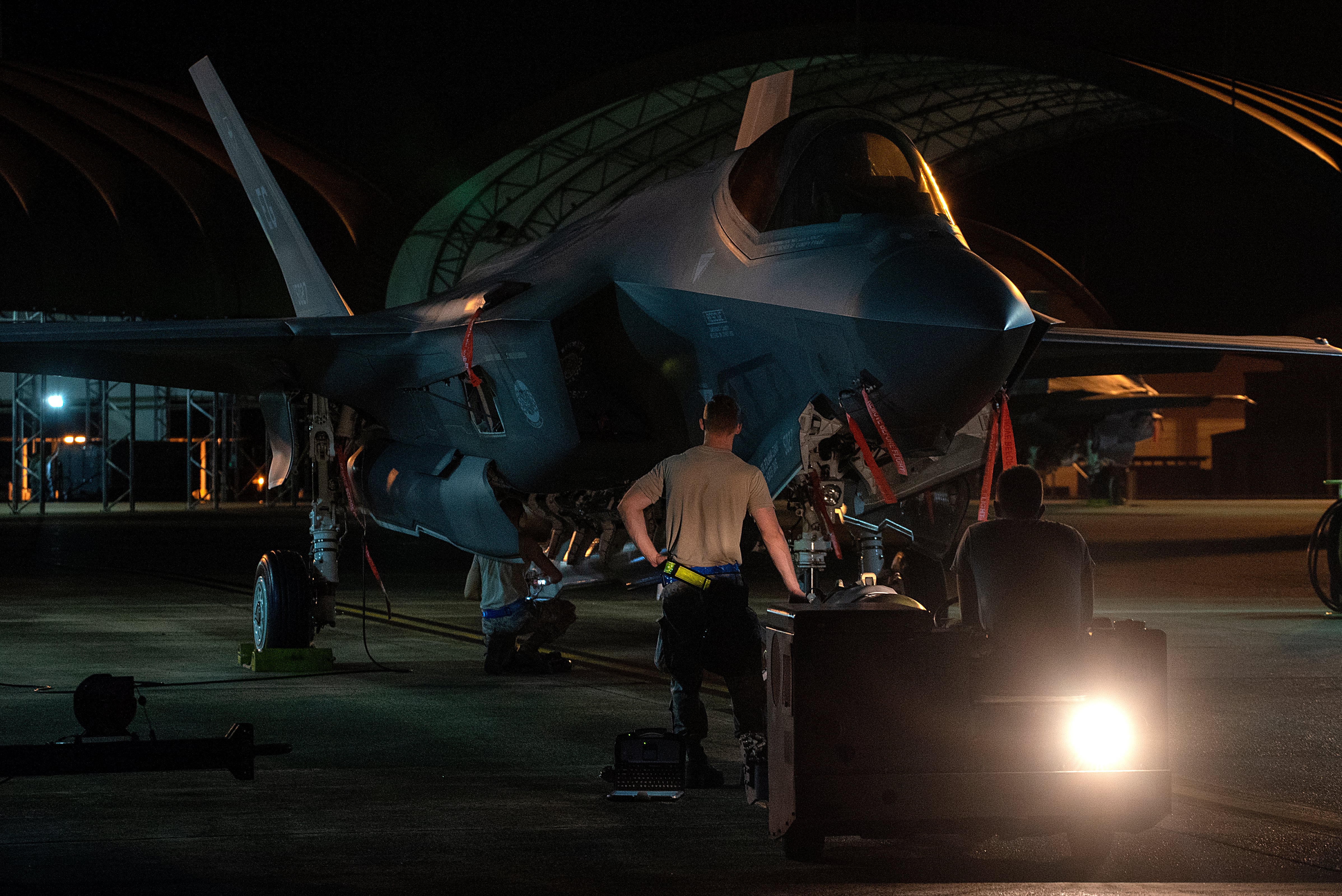An investigation has concluded that the May 19 crash of an F-35A Lightning II at Eglin Air Force Base in Florida was caused by the pilot trying to land at an excessive speed, and a previously unknown flight control logic glitch that left its tail unresponsive.
The report, which the Air Force posted online Sept. 30, also listed multiple pilot mistakes or factors that investigators said significantly contributed to the crash on Eglin’s Runway 30. They found the pilot was fatigued and, as a result, “experienced cognitive degradation” was also distracted at a critical point in the flight due to a misaligned helmet-mounted display. The pilot tried to land with the speed hold engaged and used an alternate cross-check method, and lacked some key knowledge about the fighter’s flight control logic.
The pilot in this crash successfully ejected, sustaining non-life threatening injuries. The crash was the second involving a fifth-generation fighter at Eglin in short succession, following an F-22 crash four days earlier. It prompted alarmed base leadership to temporarily put flights on hold to focus on safety.
The F-35 was in the 58th Fighter Squadron, assigned to Eglin’s 33rd Fighter Wing.
RELATED

The pilot, who was a qualified instructor pilot, was the flight lead in a night training sortie alongside another F-35. The two-ship finished the training, and the pilot approached the runway for a landing at about 9:25 p.m.
But the pilot landed too fast and too shallowly. As the fighter approached, its speed hold was set at a calibrated airspeed of 202 knots, which at this point was in line with normal procedure. But it should have been disengaged before landing so the fighter could slow down.
Problems started to mount upon approach, distracting the pilot, the report said. The pilot noticed something was wrong with his helmet-mounted display, suggesting it was misaligned in relation to the horizon. The pilot cross-checked his virtual heads-up display and instrument landing system data, and visually adjusted his aim point and glide slope toward the runway’s threshold.
The data showed the fighter was high in the glide path, and coming in with its nose further down than normal for a landing. The pilot tried to correct the error, which further threw off the misaligned display readings.
What’s more, it was nighttime and the area around the runway was poorly lit. The pilot “described having to point into the black abyss” of the area in front of the runway, the report said. And the green glow of his display was increasingly distracting the pilot, the report said, even though he turned its brightness down on his final approach. The report said humidity worsened the glow.
The fighter touched down with the speed hold still engaged — which is a prohibited maneuver — and about 50 knots faster than intended. It also came in at an angle of attack of 5.2 degrees, or 8 degrees shallower than it should have. At that speed, the pilot had to nudge the stick forward to touch down. This caused all three landing gear to touch the ground at the same time, instead of the rear gear touching first and then easing the nose gear down.
The three-point attitude landing caused the nose gear to bounce, and the fighter’s nose rose quickly and sharply. The pilot again pushed the stick forward to try to stop the fighter, which started a series of “increasingly violent” pitch oscillations as it bounced on the landing gear.
The pilot continued to try to regain control of the fighter for about five seconds, but the flight control system became overwhelmed by the quick succession of forward and aft stick movements. This flight control system glitch caused the plane’s horizontal stabilizers to default to a trailing edge down direction and stay there, nudging the nose down.
The pilot pulled back on the stick and hit full afterburners to try to abort the landing. But with the stabilizers pointing down, his effort to take off again was unsuccessful and he was forced to bail out.
The $176 million plane rolled, caught fire, and was completely destroyed, the report said. Debris was strewn across the runway and in the field to its north. The pilot landed on the south end of the runway, and was recovered by emergency responders.
The report said the pilot was fatigued and said he had been having increasingly poor sleep. The pilot also said he felt fatigued more often in the F-35 than in his previous aircraft, the F-15E. The report notes that the F-35′s oxygen delivery system is different than legacy oxygen systems like the one in the F-15E, and has caused many F-35 pilots to feel slightly more fatigued than usual.
The pilot was fixated on the faulty display symbology during the critical phase of landing, to the exclusion of cross-checking his airspeed and angle of attack, the report said. And he had several things on his mind, the report said, including a positive COVID-19 test of a contact of a contact that might require him to quarantine, which contributed to his task over-saturation.
Stephen Losey is the air warfare reporter for Defense News. He previously covered leadership and personnel issues at Air Force Times, and the Pentagon, special operations and air warfare at Military.com. He has traveled to the Middle East to cover U.S. Air Force operations.





